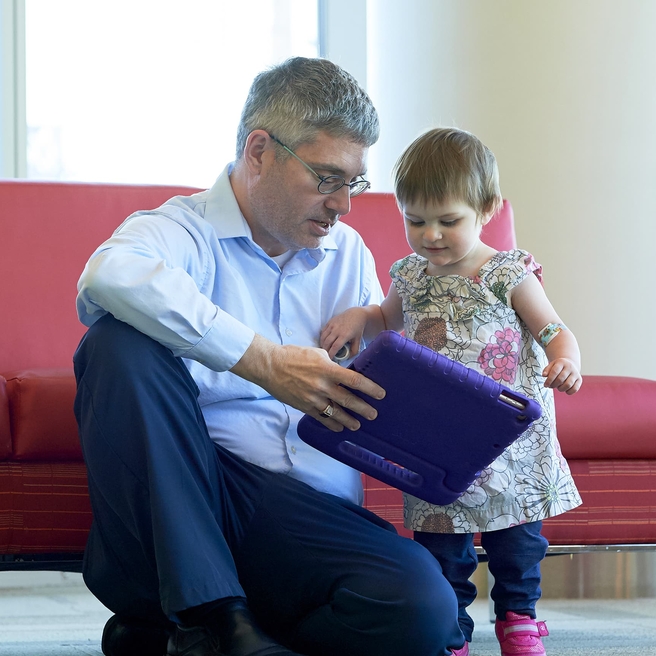What is allergic rhinitis?
Rhinitis is the inflammation or irritation of the mucous membranes lining the nose. When rhinitis is caused by allergies, it is referred to as allergic rhinitis or "hay fever."
Causes of allergic rhinitis
When symptoms occur all year round, they are usually caused by allergens that are constantly present in the environment, such as pets or dust mites.
Symptoms of seasonal allergies are usually caused by specific pollens:
- Spring: tree and grass pollen
- Summer through fall: weed pollen
- Late summer through fall: ragweed pollen
One particular form of non-allergic rhinitis, called rhinitis medicamentosa, occurs when over-the-counter decongestant nasal sprays (e.g., Afrin® nasal spray or Neo-Synephrinen® nasal spray) are used regularly. These nasal sprays are very different from prescription nasal sprays used to treat allergic rhinitis.
Sign and symptoms of hay fever
The signs and symptoms of rhinitis include:
- Runny nose
- Stuffy nose
- Itching
- Sneezing
- Itchy, red and/or watery eyes
- Allergic shiners: dark circles under eyes caused by nasal congestion.
- Allergic salute: a rubbing motion done by children with the palm of the hand due to nasal itching, which can result in a crease along the nose
- Mouth-breathing from nasal congestion, which can interfere with the normal development of the face in children
- Lining of the nasal cavity may appear swollen and pale blue
- The back of the throat may show "cobblestoning" or bumps
An examination of the nose is important to rule out other causes of blockage such as polyps (growth of tissue on the mucous membranes), a deviated septum or a foreign body.
Complications of allergic rhinitis
The inflammation and swelling caused by allergic rhinitis may lead to poor drainage of secretions, leading to sinus or ear infections.
A cough associated with allergic rhinitis may represent reactive airways or asthma. You should notify your healthcare provider if the cough:
- Occurs during the night
- Is associated with mucus in the chest or vomiting mucus
- Is worsened with physical activity
- Persists for longer than a week
Testing and diagnosis of hay fever
Skin testing is used to confirm suspected allergens. Prick or scratch testing is done with extracts (liquid forms of the allergens) and a device to puncture the very top surface of the skin. You should know, though, that only about 80 percent of patients showing symptoms to allergens in the air will have a positive test by this screening method.
Intradermal testing may be done when the prick skin test is negative. It is a more sensitive test which involves putting the extract under the skin with a needle. We will perform this test if there is a need to make a decision about which allergens will be included in extracts to be given for "allergy shots" (allergen immunotherapy or "IT").
Treatment for hay fever
The first course of treatment for allergic rhinitis is to limit exposure to individual allergens and irritants. When this is not effective, medications are then given.
Immunotherapy, or "allergy shots," are given when environmental control and medications still do not adequately control symptoms.
Antihistamines
Antihistamines are the most commonly used medication for treating allergic rhinitis. Antihistamines prevent or relieve itching, sneezing and runny nose. They can also be combined with a decongestant to relieve nasal congestion.
There is some advantage to taking antihistamines regularly during an allergy season, but they are also helpful if taken only when needed. First generation antihistamines are older and often available without a prescription.
Nasal corticosteroids
Nasal steroids are medicines that reduce inflammation in the nasal passages. They are sprayed into the nose to prevent all symptoms of allergic rhinitis. Commonly used brand names include Nasacort® nasal spray, RHINOCORT® nasal spray, Flonase® nasal spray and Nasonex® nasal spray.
This form of medication may take several days to several weeks to have an effect and must be given to your child every day as directed. Side effects may include burning, irritation, nosebleeds, dryness and increased sneezing.
Since nasal steroids act locally, they are considered safe, even in children. If you have any concerns about using this type of medication, please discuss them with your healthcare provider.
To use this medicine:
- First have your child clear his nasal passages by blowing his nose.
- Then, with his other nostril pinched closed, he should insert the nosepiece gently into the nostril. He will then aim the spray out and down the nasal passage (not toward the middle of his nose) while sniffing gently.
- Pinching the same nostril after a liquid preparation is sprayed may help keep the medicine from running out of the nose.
- Young children do not need to sniff if they are unable. You may have some success if you give your child the medication while he is sleeping.
Resources to help
Allergic Rhinitis Resources
Allergy Program Resources
Caring for a child with an allergic disease can be challenging. To help you find answers and feel confident with the care you are providing your child, we’ve created the following list of health resources.
